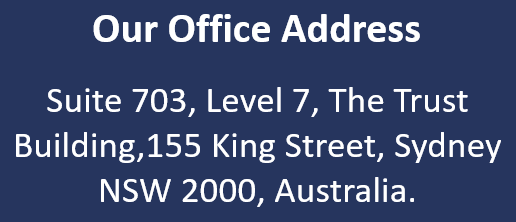SOC 2 Type 2 Audit Australia Edition: Key Steps To Get Ready
Introduction
In today's digital age, data security and privacy are top priorities for businesses around the world. If you're operating in Australia, obtaining a SOC 2 Type 2 report is crucial for demonstrating your commitment to protecting customer data. This audit process can seem daunting, but with the right preparation, you can navigate it smoothly. In this guide, we'll walk you through the steps to prepare for a SOC 2 Type 2 audit in Australia. Before diving into the preparation, it's important to understand what a SOC 2 Type 2 report entails. SOC 2, or Service Organization Control 2, is a framework developed by the American Institute of CPAs (AICPA) to ensure that service providers manage data securely. The Type 2 report evaluates the effectiveness of a company's systems and processes over a period of time, typically between six months to a year.

Why SOC 2 Compliance Matters?
SOC 2 compliance is not just a regulatory requirement; it's a competitive advantage. By obtaining a SOC 2 Type 2 report, you demonstrate your organization's dedication to data security, which can increase client trust and open doors to new business opportunities. Customers and partners in Australia and beyond will appreciate your commitment to safeguarding their data.
Steps To Prepare For A SOC 2 Type 2 Audit
1. Define the Scope
The first step in preparing for a SOC 2 Type 2 audit is defining its scope. Determine which systems, processes, and data are relevant to your audit. This will help you focus your efforts and resources where they are needed most. In Australia, you should also consider any local regulations that may impact your scope.
2. Select the Right Trust Service Criteria
SOC 2 audits are based on five Trust Service Criteria: Security, Availability, Processing Integrity, Confidentiality, and Privacy. Not all criteria may be applicable to your organization. Choose the ones that align with your business objectives and client needs. For instance, if your clients are particularly concerned about data privacy, prioritize the Privacy criterion.
3. Conduct a Gap Analysis
A gap analysis helps identify areas where your current processes and controls fall short of SOC 2 requirements. This involves comparing your existing practices against the criteria you've selected. Identifying these gaps early allows you to address them before the audit begins.
4. Implement Necessary Controls
Once you've identified the gaps, it's time to implement the necessary controls. This could involve updating your security policies, enhancing data encryption methods, or improving access controls. Ensure that these controls are well-documented and integrated into your daily operations.
5. Train Your Team
Your team plays a critical role in achieving SOC 2 compliance. Conduct regular training sessions to ensure that everyone understands the importance of data security and their role in maintaining it. Provide clear guidelines and resources to help them adhere to the new controls.
6. Monitor and Document Everything
SOC 2 Type 2 audits focus on the effectiveness of your controls over time. Regularly monitor your systems to ensure they are functioning as expected. Document all processes, incidents, and corrective actions taken. This documentation will be invaluable during the audit process.
7. Choose an Experienced Auditor
Selecting the right auditor is essential for a successful SOC 2 audit. Look for auditors with experience in your industry and a deep understanding of the Australian regulatory landscape. They can provide valuable insights and guidance throughout the audit process.
The Audit Process
The SOC 2 Type 2 audit process involves several stages. Understanding these stages can help you better prepare and manage your expectations.
1. Planning and Preparation
During this phase, you'll work with your auditor to finalize the audit scope and objectives. Ensure that all necessary documentation is ready for review.
2. Fieldwork
Fieldwork is the main phase of the audit, where auditors assess your controls in action. They may request additional information or evidence to support their findings. Be prepared to provide clear and concise documentation.
3. Report Generation
Once the fieldwork is complete, the auditor will compile a SOC 2 Type 2 report. This report outlines your organization's adherence to the selected Trust Service Criteria and highlights any areas for improvement.
4. Responding to Findings
If the audit uncovers any deficiencies, it's important to address them promptly. Work with your auditor to develop a remediation plan and implement corrective actions. Demonstrating your commitment to continuous improvement is key to maintaining SOC 2 compliance.
Maintaining SOC 2 Compliance
Achieving SOC 2 compliance is an ongoing process. Regularly review and update your controls to keep pace with evolving threats and regulations. Consider conducting internal audits to identify potential issues before they escalate.
Conclusion
Preparing for a SOC 2 Type 2 audit in Australia may seem challenging, but with careful planning and execution, it can be a smooth and rewarding process. By following these steps and maintaining a strong focus on data security, you'll not only achieve compliance but also build trust with your clients and partners. Remember, SOC 2 compliance is not just about checking a box; it's about creating a culture of security within your organization. With the right mindset and approach, you can confidently navigate the SOC 2 audit process and position your company for long-term success.




